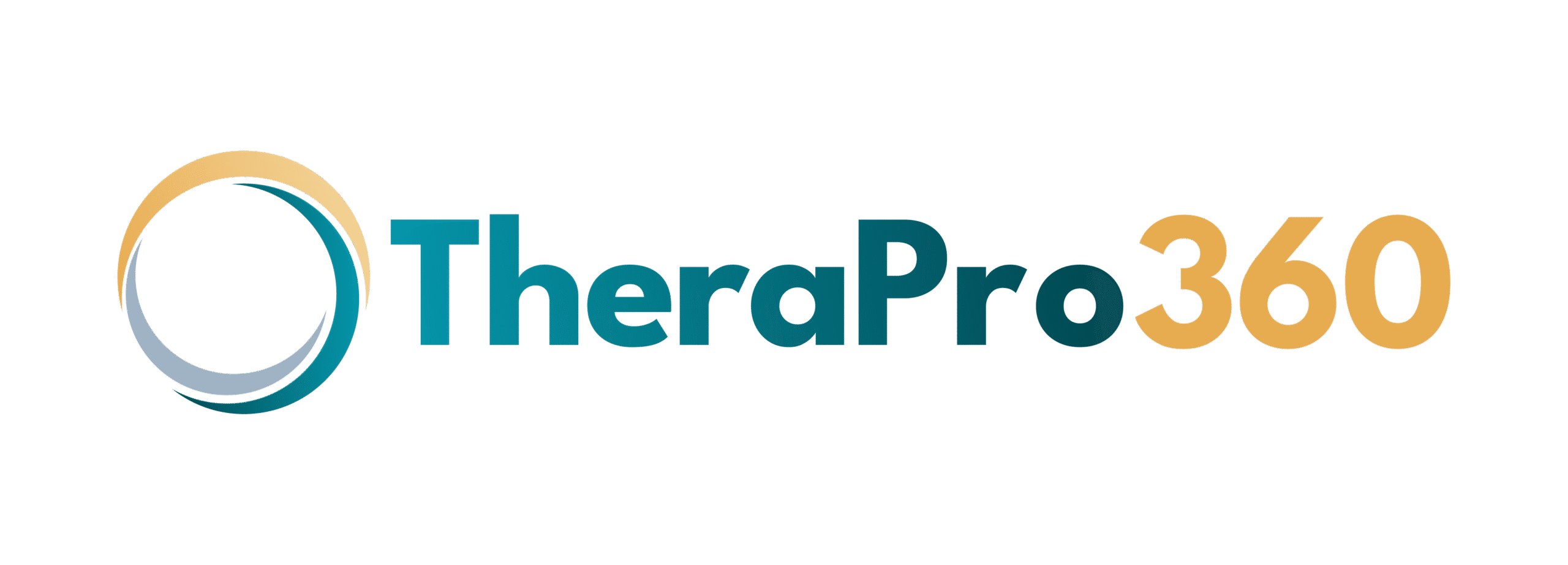
Blog
How Smart Scheduling Software Reduces No-Shows in Speech Therapy
Expert web designers ensure the site and software is easy to use.How Smart Scheduling Software Reduces No-Shows in Speech Therapy
A patient no-show is more than just an empty slot in your calendar. For a speech therapy practice, every missed appointment represents lost revenue, wasted clinician time, and a disruption in a patient’s care plan. The cumulative effect of no-shows can significantly impact your practice’s financial health and operational efficiency. While some missed appointments are unavoidable, many are preventable with the right systems in place.
Relying on sticky notes, paper calendars, or basic spreadsheet schedulers leaves your practice vulnerable to communication gaps and human error—the very things that lead to no-shows. These outdated methods create a constant administrative burden of phone tag, manual appointment reminders, and frantic rescheduling, pulling your team away from patient-focused activities.
The solution lies in leveraging technology designed to address this specific challenge. This guide will explore the profound impact of no-shows on speech therapy practices and demonstrate how smart scheduling tools, a core component of modern practice management software for speech therapists, can drastically reduce your no-show rate. We’ll cover key features, implementation strategies, and the clear return on investment that comes from creating a more reliable and efficient scheduling workflow.
The Impact of No-Shows on Speech Therapy Practices
Missed appointments are a pervasive issue in all healthcare settings, but they can be particularly damaging to therapy practices that rely on a consistent schedule of recurring visits. The impact goes far beyond the inconvenience of a suddenly free hour; it creates financial instability and disrupts the continuity of care that is so vital for patient progress.
How missed appointments affect your bottom line
The financial math of a no-show is simple and brutal. If a patient misses a session that would have been reimbursed at $125, you have lost $125 in revenue. That revenue is gone forever. If your practice averages just three no-shows per week, that adds up to $1,500 in lost revenue per month, or $18,000 per year. For a small private practice, this leakage can be the difference between profitability and struggle.
While some practices implement no-show fees, collecting them can be difficult and can sometimes damage the client relationship. The most effective financial strategy is not to penalize no-shows, but to prevent them from happening in the first place.
The hidden costs — wasted time, reduced productivity, and lost revenue
Beyond the direct loss of revenue, no-shows carry significant hidden costs that drain your practice’s resources.
- Wasted Clinician Time: A speech-language pathologist (SLP) prepared for a session is a paid resource. When a patient doesn’t arrive, that clinician’s time is wasted. They could have been seeing another patient, completing documentation, or engaging in professional development.
- Reduced Productivity: No-shows create unproductive gaps in the day, disrupting the flow of the clinic. A therapist with unexpected downtime is not operating at full capacity, which lowers the overall productivity of your practice.
- Administrative Burden: The administrative time spent trying to fill last-minute cancellations, rescheduling missed appointments, and following up with patients adds up. This is time your front office staff could be spending on more valuable tasks like patient intake or insurance verification.
- Disrupted Patient Progress: For the patient, a missed appointment is a break in their therapeutic momentum. Consistent attendance is critical for achieving goals in speech therapy, especially for children. Frequent no-shows can delay progress and lead to poorer outcomes.
Common reasons patients miss speech therapy sessions
Understanding why patients miss appointments is the first step toward preventing it. Common reasons include:
- Forgetting the Appointment: This is the most frequent and most preventable reason. Families are busy, and appointments made weeks in advance are easy to forget without a reminder.
- Scheduling Conflicts: A last-minute work meeting, a child’s school event, or a conflicting doctor’s appointment can arise.
- Miscommunication: The patient wrote down the wrong time, or the front desk misheard the date over the phone.
- Transportation or Childcare Issues: Practical life challenges can make getting to an appointment difficult.
- Lack of Engagement: If a patient or parent doesn’t feel a strong connection to the therapy process or doesn’t perceive its value, they are less likely to prioritize attendance.
A smart scheduling system directly addresses many of these root causes, particularly forgetfulness, miscommunication, and scheduling conflicts.
Why Manual Scheduling Fails to Prevent No-Shows
For many practices, the scheduling system is a paper day planner or a simple digital calendar. While seemingly straightforward, these manual methods lack the intelligence and automation needed to proactively manage attendance and are a significant contributor to high no-show rates.
Limitations of paper-based or spreadsheet scheduling
Manual systems are fundamentally passive. They record information but cannot act on it.
- No Automated Reminders: A paper calendar cannot automatically send a text message to a patient two days before their appointment. This task falls to a staff member, who may be busy, forget, or run out of time, leaving patients without a crucial reminder.
- Prone to Human Error: Illegible handwriting can lead to a patient being scheduled for the wrong day. A typo in a spreadsheet can create a double-booking. There are no built-in safeguards to prevent these common mistakes.
- Lack of Centralization: If one therapist uses a paper planner and another uses a personal digital calendar, there is no single source of truth for the practice’s schedule. This makes it impossible for the front desk to have a clear view of availability, leading to confusion and booking errors.
- No Data and Insights: A paper calendar can’t tell you your practice’s no-show rate, identify which patients miss appointments most frequently, or show you your busiest times of day. This lack of data prevents you from making informed decisions to improve your operations.
How miscommunication and human error lead to cancellations
Every manual step in the scheduling process is a potential point of failure. A patient calls to schedule, and the front desk staff member jots the name down on a sticky note to enter later. The note gets lost. A parent asks to change an appointment, and the change is made on the calendar, but the therapist’s personal schedule isn’t updated. The patient and therapist are now on different pages.
Phone tag is another major issue. A staff member calls to confirm an appointment and leaves a voicemail. The parent calls back and leaves a voicemail. This back-and-forth is inefficient and can easily lead to misunderstandings about the correct appointment time.
The administrative burden of constant rescheduling
Manual scheduling creates a constant cycle of administrative work. Staff members spend a significant portion of their day making reminder calls, dealing with last-minute cancellations, and trying to fill empty slots. When a patient cancels, the staff has to pull out a paper waitlist (if one even exists) and start making outbound calls, a process that is rarely successful on short notice. This reactive, time-consuming work keeps your team stuck in administrative churn and prevents them from focusing on a better patient experience.
The Role of Smart Scheduling in Practice Management Software
The solution to the chaos of manual scheduling is a “smart” system. This isn’t just a digital calendar; it’s an intelligent, automated tool that is deeply integrated into your practice’s operations. This technology is a core feature of modern practice management software for speech therapists.
What makes scheduling software “smart”
Smart scheduling software goes beyond simply displaying appointments. It actively manages and communicates about them. Key “smart” characteristics include:
- Automation: It performs tasks automatically, without human intervention. The most obvious example is sending appointment reminders.
- Integration: It connects seamlessly with other parts of your practice management system, such as patient records, billing, and clinical documentation.
- Communication: It facilitates two-way communication between the practice and the patient through channels like SMS and email.
- Data-Driven: It collects and analyzes data to provide insights into your practice’s performance, such as your no-show rate.
- Accessibility: It can be accessed by authorized users from anywhere, on any device, providing a real-time view of the schedule for the entire team.
How automation connects your calendar, patient data, and billing
In an integrated system, the scheduler is the central hub that connects everything.
- Scheduling & Patient Data: When you book an appointment, you link it to a patient’s electronic record. This automatically pulls in their contact information for reminders and their insurance details for eligibility checks.
- Scheduling & Billing: The appointment type (e.g., “60-minute Individual Session”) can be pre-linked to a specific CPT code. When the appointment is completed, this information flows directly to the billing module, creating an accurate charge and reducing the chance of coding errors.
- Scheduling & Documentation: The SLP sees the appointment on their schedule, and with one click, they can open the patient’s chart and begin their progress note for that session.
This seamless flow of information eliminates redundant data entry and ensures consistency across your entire workflow.
Real-time updates that eliminate double-booking and missed sessions
With a cloud-based smart scheduler, everyone on your team is looking at the same, up-to-the-minute information. If a front desk staff member books an appointment for a therapist, it instantly appears on that therapist’s schedule on their tablet or computer. This real-time synchronization makes it virtually impossible to double-book a time slot.
This also prevents missed communications. If a patient cancels online, the system immediately removes the appointment from the calendar and notifies the relevant staff, freeing up the slot for another patient. There’s no risk of a therapist waiting for a patient who canceled with the front desk an hour earlier.
Key Scheduling Features That Reduce No-Shows
A powerful scheduling tool within a practice management software for speech therapists will include several key features specifically designed to combat no-shows and improve attendance.
Automated appointment reminders via SMS and email
This is the single most effective feature for reducing no-shows. The system automatically sends reminders to patients at a cadence you define (e.g., 3 days before and again 24 hours before).
- SMS and Email: Reaching patients on their preferred platform (especially text message) ensures they see the reminder.
- Customizable Templates: You can personalize the message to include the patient’s name, appointment date/time, and your clinic’s address.
- Confirmation Responses: Patients can reply “C” to confirm or “R” to request a reschedule. This engagement solidifies the appointment in their mind and gives you a heads-up if they need to change.
Easy patient self-scheduling and online confirmations
Empowering patients to manage their own schedules increases their buy-in and reduces your administrative workload. A patient portal can allow clients to:
- Book Appointments Online: You can set which appointment types and times are available for online booking, giving patients the flexibility to schedule when it’s convenient for them.
- View Upcoming Appointments: A patient can log in and see their family’s entire schedule of upcoming therapy sessions.
- Confirm or Cancel: They can confirm their attendance or cancel an appointment online (within the rules of your cancellation policy), which automatically updates the main schedule.
Waitlist management and auto-fill for canceled slots
Cancellations happen. A smart system helps you turn that empty slot back into a revenue-generating appointment.
- Digital Waitlist: Instead of a paper list, you maintain a digital waitlist within the software. You can note a patient’s availability (e.g., “free on Tuesday afternoons”).
- Smart Suggestions: When an appointment is canceled, the system can automatically identify patients on the waitlist whose availability matches the open slot and send them a notification.
- Auto-Fill offers: Some advanced systems can automatically text the first person on the waitlist, offering them the open slot. If they accept, they are booked. If they decline or don’t respond within a set time, the offer goes to the next person on the list. This all happens automatically, without any staff involvement.
Two-way communication between therapists and clients
Sometimes a simple text message exchange can prevent a no-show. Secure, HIPAA-compliant two-way messaging allows a parent to text the office, “We’re running 10 minutes late, is that okay?” or a therapist to send a quick message, “Just a reminder that we are working on /s/ blends today, so please bring Sarah’s practice folder!” This level of communication builds rapport and keeps therapy top-of-mind.
Calendar syncing across devices and providers
For a busy practice with multiple therapists, a centralized and synchronized calendar is crucial. The software should allow for:
- Multi-provider Views: An office manager can see all therapists’ schedules at once, color-coded for clarity.
- Individual Views: Each therapist can see their own schedule on their computer, tablet, or smartphone.
- Real-Time Syncing: Any change made on any device is instantly reflected across all views, ensuring everyone is working with the most current information.
How Automated Reminders Improve Attendance Rates
Automated reminders are the cornerstone of no-show reduction. Studies across healthcare have shown that automated reminders can reduce no-show rates by 30-50% or more. Their effectiveness comes from their consistency, personalization, and ability to prompt an immediate response.
Personalized reminders that boost patient engagement
A generic reminder is helpful, but a personalized one is far more effective. A smart system can pull data from the patient’s record to customize the message.
- Use the Patient’s Name: “Hi Jane, this is a reminder of your appointment with Sarah at Bright Speech Therapy…”
- Include Therapist Name: Knowing which therapist they are seeing can be helpful, especially in a multi-provider practice.
- Include Location Details: For multi-location therapy groups, specifying the clinic address in the reminder prevents patients from going to the wrong office.
This personalization makes the message feel less like an automated blast and more like a personal communication, increasing the likelihood that the patient will read and act on it.
Timing strategies — when to send reminders for best results
The timing of your reminders is critical. A single reminder the day before might not be enough. A common best-practice cadence is:
- Initial Confirmation: An email is sent immediately upon booking the appointment.
- First Reminder (2-3 Days Out): A text message or email sent 48-72 hours before the appointment. This gives the patient enough time to reschedule if they have a conflict, allowing you time to fill the slot.
- Second Reminder (24 Hours Out): A text message sent the day before the appointment. This is the final confirmation to cement the appointment in their mind.
Allowing patients to choose their preferred communication method (SMS or email) further increases the effectiveness of this strategy.
Tracking reminder delivery and response rates
A smart system doesn’t just send reminders; it tracks them. You can see reports that show:
- Delivery Status: Was the text message successfully delivered? Did the email bounce? This helps you identify bad contact information.
- Confirmation Status: The system logs patient responses, giving you a clear list of who has confirmed and who hasn’t. Your staff can then focus their follow-up efforts only on those who haven’t responded.
Using reminder analytics to refine communication
Over time, you can analyze your reminder data to optimize your strategy. You might find that text message reminders have a much higher confirmation rate than emails, prompting you to make SMS your default method. Or you might notice that a certain patient population responds better to reminders sent in the evening versus the morning. This data allows you to fine-tune your approach for maximum impact.
Integrating Scheduling with Billing and Documentation
The real power of a smart scheduler is unlocked when it is part of a fully integrated practice management software for speech therapists. This integration creates a seamless workflow that saves time, reduces errors, and improves cash flow.
How integrated systems streamline administrative workflows
When scheduling, billing, and clinical notes are all in one system, information flows effortlessly.
- Intake to Schedule: A new patient fills out an online intake form. Their demographic and insurance information is automatically loaded into their chart. The front desk can then schedule their first appointment without re-typing any of that data.
- Schedule to Note: The therapist sees the appointment, opens the patient’s chart, and uses a template to write their progress note. The appointment details (date, time, duration) are pre-populated in the note.
- Note to Bill: Once the therapist signs the note, the system automatically creates a billable claim with the correct codes, ready for submission.
This automated, end-to-end workflow eliminates dozens of manual steps, freeing up your team to focus on higher-value activities.
Reducing billing delays with accurate appointment data
Billing errors are a primary cause of payment delays. An integrated scheduler helps prevent these errors at the source. Because the claim is generated directly from the scheduled and documented appointment, you can be sure that:
- The date of service on the claim is correct.
- The CPT code on the claim matches the service provided.
- You are not accidentally billing for a canceled or no-showed appointment.
This leads to a higher “clean claim rate,” meaning more of your claims are paid correctly on the first submission, which dramatically accelerates your revenue cycle.
Linking progress notes, sessions, and invoicing seamlessly
An integrated system provides a holistic view of the patient journey. You can easily navigate from a specific appointment on the calendar to the corresponding progress note, the insurance claim that was submitted, the ERA that paid it, and the patient invoice that was sent for the copay. This complete, interconnected audit trail is invaluable for answering patient questions, resolving billing issues, and tracking a patient’s care from start to finish.
The ROI of Smart Scheduling for Speech Therapy Practices
Implementing smart scheduling software is not a cost; it’s an investment with a clear and measurable return on investment (ROI). The financial and operational benefits are significant and compound over time.
Fewer no-shows = higher revenue and productivity
This is the most direct ROI. Let’s run a simple calculation for a small practice:
- No-Show Rate (Manual): 15%
- Weekly Appointments: 80
- Weekly No-Shows: 12 (15% of 80)
- Average Revenue per Visit: $100
- Lost Revenue per Week: 12 x $100 = $1,200
- Lost Revenue per Year: $1,200 x 50 weeks = $60,000
Now, let’s assume smart scheduling software reduces the no-show rate to 5%:
- No-Show Rate (Automated): 5%
- Weekly No-Shows: 4 (5% of 80)
- Lost Revenue per Week: 4 x $100 = $400
- Revenue Recaptured per Week: $1,200 – $400 = $800
- Annual Revenue Recaptured: $800 x 50 weeks = $40,000
In this scenario, a software subscription that costs a few hundred dollars a month is generating tens of thousands of dollars in reclaimed revenue.
Improved patient retention and satisfaction
A smooth, professional scheduling experience enhances patient satisfaction. Patients appreciate the convenience of online booking and the helpfulness of automated reminders. This positive experience, combined with the better clinical outcomes that come from consistent attendance, leads to higher patient retention. Retaining an existing patient is far more cost-effective than acquiring a new one.
Lower administrative costs through automation
Calculate the hours your staff spends on manual scheduling tasks: making reminder calls, playing phone tag, and rescheduling appointments. If you can reduce that time by 5-10 hours per week, you are saving hundreds or thousands of dollars in administrative labor costs each month. This time can be reallocated to tasks that actively grow the practice, such as marketing or improving the new patient onboarding process.
Enhanced practice scalability with data-driven insights
Smart scheduling software provides the data and infrastructure you need to grow. The efficiency gains allow you to add more therapists and see more patients without a proportional increase in administrative staff. The data on provider utilization, peak appointment times, and no-show trends helps you make smarter decisions about staffing and resource allocation as you scale.
Choosing the Right Practice Management Software for Scheduling
When evaluating software, it’s crucial to look for a platform that offers robust, therapy-specific scheduling features within a fully integrated system.
Must-have scheduling features for speech therapists
Checklist for Essential Features:
- [✓] Automated, customizable appointment reminders (SMS and email).
- [✓] Patient confirmation and response tracking.
- [✓] An online patient portal for self-scheduling and appointment management.
- [✓] An intelligent, automated waitlist.
- [✓] A centralized, multi-provider calendar with real-time sync.
- [✓] Secure two-way messaging capabilities.
- [✓] The ability to create recurring appointments for ongoing therapy.
Evaluating ease of use and mobile accessibility
The software should be intuitive and easy for your entire team to learn. During a demo, ask to see the workflow for booking an appointment, rescheduling, and handling a cancellation. The interface should be clean and user-friendly. Given that therapists are often moving between rooms or even locations, mobile accessibility is key. Ensure the scheduler works flawlessly on tablets and smartphones.
Integration with billing, documentation, and teletherapy tools
The scheduler should not be a standalone island. Verify that it is deeply integrated with the billing and EMR/documentation modules. If you offer virtual services, confirm that the software integrates with a teletherapy platform, allowing you to schedule virtual appointments and automatically send patients a secure video link.
Data security and HIPAA compliance considerations
Any software that handles patient information must be fully HIPAA compliant. The vendor must be willing to sign a Business Associate Agreement (BAA). Ask about their security measures, such as data encryption, secure cloud hosting, and user-based access controls that allow you to limit who can see what information.
Implementation Tips for Smart Scheduling Software
A successful transition to a new scheduling system requires a thoughtful implementation plan.
How to transition from manual to automated scheduling
Start by carefully importing your existing schedule into the new system. Most software vendors will provide support for this data migration. Run your manual system in parallel for the first week or two to double-check for any discrepancies and build your team’s confidence.
Setting up automated reminders and policies
Work with your implementation specialist to configure your automated reminder templates and timing. At the same time, update your practice’s cancellation and no-show policy. Communicate this policy clearly to all patients and have them sign an acknowledgment. Your policy should align with your new system’s capabilities.
Training staff and clients for smooth adoption
Proper training is essential. Ensure your front desk staff, therapists, and billers all receive role-specific training on the new software. Create simple, one-page guides for patients on how to use the new online portal for scheduling and confirmations. Announce the new system to your clients in a positive way, highlighting the benefits for them, such as the convenience of text reminders and online booking.
Measuring success with attendance and retention metrics
Before you go live, establish your baseline metrics. What is your current no-show rate? What is your patient retention rate? After implementing the new system, track these metrics monthly using the software’s reporting tools. Seeing the no-show rate drop from 15% to 5% will provide clear, motivating proof of your success.
Conclusion: Reducing No-Shows with Smart Scheduling Tools
No-shows are a significant but largely solvable problem for speech therapy practices. By moving away from inefficient manual scheduling and embracing smart, automated tools, you can dramatically improve attendance, stabilize your revenue, and reduce administrative stress.
Recap of the benefits of scheduling automation
- Reduces No-Shows: Automated reminders and confirmations are proven to increase attendance rates.
- Increases Revenue: Fewer missed appointments and automated waitlist management directly translate to higher revenue.
- Saves Time: Automation eliminates hours of manual administrative work for your staff.
- Improves Patient Experience: Patients appreciate the convenience and professionalism of a modern scheduling system.
Why smart scheduling is essential for modern practice management
In today’s competitive healthcare landscape, efficiency and patient experience are paramount. A smart scheduler, as part of an integrated practice management software for speech therapists, is no longer a luxury; it is a fundamental tool for running a successful, profitable, and scalable practice. It provides the operational backbone that allows you to focus on what truly matters: delivering exceptional care to your patients.
Next steps to implement the right software in your speech therapy practice
- Calculate the Cost: Determine your current no-show rate and calculate how much it’s costing you annually.
- Research and Demo: Identify top-rated practice management platforms and request live demos focused on their scheduling capabilities.
- Evaluate Integration: Choose a system that offers a seamless workflow between scheduling, documentation, and billing.
- Plan Your Transition: Commit to a structured implementation and training plan to ensure smooth adoption by your team and clients.
By taking these steps, you can turn your schedule from a source of chaos into a powerful asset for growth.
FAQs About Smart Scheduling and Practice Management Software
How do automated reminders reduce no-shows in speech therapy?
Automated reminders work by tackling the #1 reason for no-shows: forgetfulness. By sending consistent, timely reminders via text and email, they keep the appointment top-of-mind for busy families. They also prompt engagement by asking for a confirmation, which requires the patient to mentally commit to the appointment, and they provide an easy, early way for patients to reschedule if they have a conflict, giving the practice time to fill the slot.
Can scheduling software integrate with teletherapy platforms?
Yes, many modern practice management platforms designed for therapy offer built-in teletherapy solutions or seamless integrations with leading third-party platforms. This allows you to schedule a virtual session directly from the calendar, and the system will automatically generate and send a secure video link to the patient as part of the appointment reminder.
What’s the best scheduling tool for small speech therapy practices?
The best tool for a small or solo practice is not a standalone scheduling app, but rather an all-in-one practice management software for speech therapists. These integrated platforms are surprisingly affordable and provide immense value by combining smart scheduling, EMR/documentation, and billing into one system. This eliminates the need to pay for and manage multiple different programs and provides the same automation benefits that larger practices enjoy.
How do I measure the ROI of scheduling software?
You can measure the ROI in several key ways:
- No-Show Rate Reduction: Track your no-show rate before and after implementation. Multiply the number of saved appointments each month by your average revenue per visit to get a clear dollar amount of recaptured revenue.
- Administrative Time Saved: Estimate the weekly hours your staff spent on manual scheduling tasks (reminders, rescheduling) and multiply by their hourly wage to calculate labor cost savings.
- Increased Utilization: Measure your therapist utilization rate (percentage of available time that is filled with billable appointments). A good waitlist management tool will help increase this metric.
Why TheraPro360?
Run your practice with simplicity with our streamlined scheduling, seamless telehealth integration, centralized patient portals, intuitive calendar management, and automated invoicing.
Get Started Today















